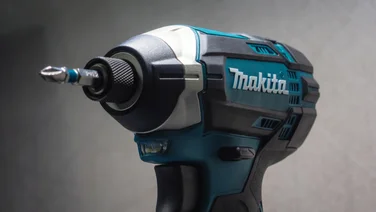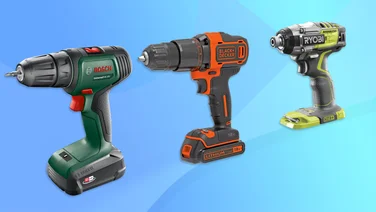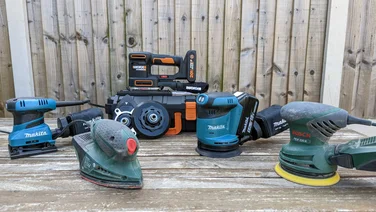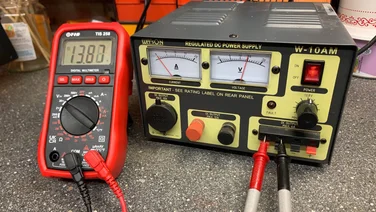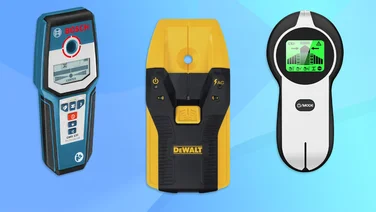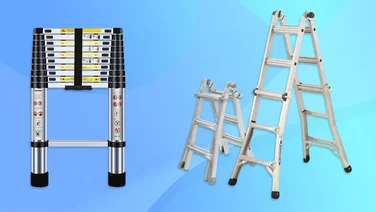To help us provide you with free impartial advice, we may earn a commission if you buy through links on our site. Learn more
- Best garage floor paint: At a glance
- How to choose the best garage floor paint for you
- The best garage floor paint you can buy in 2023
- 1. Polar Heavy Duty Interior Floor & Garage Paint: Best-value garage floor paint
- 2. Ronseal Diamond Hard Garage Floor Paint: Best hard-wearing garage floor paint
- 3. Leyland Trade semi-gloss floor paint: Best non-slip garage floor paint
- 4. Floorsaver Epoxy Floor Paint: Best epoxy garage floor paint

For some, a garage is simply a place to store lawn mowers, Christmas decorations and tools. But for others, a garage is a living, breathing workshop as valuable as any room in the house. If you’re in the latter camp, then painting your garage floor is a no-brainer. The best garage floor paints are specifically formulated for the garage environment – and there are many reasons why you should consider using it.
First, garage floor paint helps keep dust to a minimum: concrete floors generate a lot of particles that float around in the air, particularly if your garage is draughty. Garage floor paint helps seal dust in, which is especially useful if you’re spray-painting or doing jobs that require a clean environment.
It’s also particularly durable, so you won’t end up with a patchy floor after a few months of walking or standing in the same place, or where you drive your car in and out. The make-up of garage floor paint means your floor will be protected against oil, water, certain chemicals and other fluids, and spillages will be easier to clear up, leaving you more time to do more productive things.
We’ve rounded up some of the best options for a range of budgets and usages, all helping to make your garage environment a nicer place to spend time.
Best garage floor paint: At a glance
- Best value garage floor paint: Polar Heavy Duty Interior Floor & Garage Paint
- Best hard-wearing garage floor paint: Ronseal Diamond Hard Garage Floor Paint
- Best non-slip garage floor paint: Leyland Trade Semi-gloss Floor paint, 5L
- Best epoxy garage floor paint: Floorsaver Epoxy Floor Paint
How to choose the best garage floor paint for you
How do I apply garage floor paint?
As with any kind of painting, preparation is key. That means you’ll need to move everything out of the garage, fill any major cracks, sweep up dust and detritus, and give the floor a jet wash using a degreaser, if needed. You might even want to use a floor buffer for the very best results. Apply a coat of primer if your top coat needs it, and leave it to dry. Then, using a brush or a roller, apply the first coat of paint, and repeat until you get the finish you want. It’s essential that the area you’re working in is well ventilated, and you’re using suitable masks – more so if you’re using epoxy paint.
Pay attention to the drying time, but a good rule of thumb is leaving a day before you walk on the floor, and a week before you drive a car over it.
READ NEXT: Best paint for walls
What are the main types of garage floor paint?
Broadly speaking, there are two types of garage floor paint: solvent-based “single pack” paint, and epoxy paint.
At the more affordable end of the market are solvent-based paints. These are your traditional “one pot” paints, which you can apply directly onto the floor, sometimes following a coat primer, sometimes without. Solvent-based paints are usually the most cost-effective and the most straightforward to use, but while they’re perfectly suitable for most home garages, they can wear more quickly than epoxy paints in high-traffic areas such as professional workshops.
Epoxy paints are far more hard-wearing but are significantly more expensive, and require the mixing of the epoxy resin paint and a catalyst in the correct quantities. Epoxy paints require a little more care to apply, but the end result will be much tougher and more durable than solvent-based alternatives. That means they’re more resistant to wear, and you’re less likely to chip the paint if you drop a heavy tool on the floor.
Do I need a garage floor paint primer?
This depends on the kind of top-coat paint you’re using. Some paints will require a primer, and some don’t – though for the very best jobs, a good-quality primer is usually recommended.
READ NEXT: Best garage heater
The best garage floor paint you can buy in 2023
1. Polar Heavy Duty Interior Floor & Garage Paint: Best-value garage floor paint

Price: £48 | Buy now from Amazon
Polar’s paint might not be the cheapest to buy, but its ability to cover an estimated 60 square metres from five litres of paint is impressive, making your money stretch that little bit further.
Polar says its paint is good for high-traffic areas, although it recommends two coats for the best results. It’s resistant to many chemicals, plus dust and moisture, and will withstand regular washing with water. It’s slip-resistant, too.
Helping save more pennies is the fact it doesn’t require primer or concrete floor sealer, although Polar recommends allowing new concrete to mature for at least six months before painting. Polar says its paint should be touch dry in two to four hours. It’s available in light grey, black and white.
Key specs – Volume: 5 litres; Colour: Light grey, black, white; Paint type: Solvent; Coverage: 60sqm
2. Ronseal Diamond Hard Garage Floor Paint: Best hard-wearing garage floor paint

Price: £48 | Buy now from Amazon
Ronseal’s Diamond Hard garage floor paint does exactly what it says on the tin – well, almost. While it won’t stand up to a diamond-tipped drill hacking away, it will shrug off scuffs and scratches from most workshop tools. And it will stop unsightly staining from oil, petrol or grease, too. Ronseal says it can be used on bare concrete floors or over the top of existing paint, and it spreads smoothly for a neat finish.
The water-based acrylic should be touch dry in four hours and completely dry in three days, which is pretty typical for garage floor paints. It’s available in five appealing colours. The only drawback is the coverage cost, with the near-£50 paint covering only 20 square metres.
Key specs – Volume: 5 litres; Colour: Slate, tile red, steel blue, green, black; Paint type: Acrylic; Coverage: 20sqm
3. Leyland Trade semi-gloss floor paint: Best non-slip garage floor paint

Price: £44 | Buy now from B&Q
Many garage floor paints proudly tout their non-slip properties, but Leyland turns it up a notch with a textured semi-gloss finish that makes wet or damp garage floors that little bit easier to walk on. The solvent-based paint contains a light aggregate that delivers a finish that’s grippy yet smooth.
It’s suitable for internal concrete, steel and wooden floors in light to medium traffic areas, so is perfect for garage floors. Leyland says it’s suitable for smaller outside areas, such as for marking walkways, but not larger areas. Despite this, Leyland estimates a coverage of 11 square metres per litre, equating to an impressive 55sqm coverage per five-litre tin.
Key specs – Volume: 5 litres; Colour: Slate grey; Paint type: Solvent; Coverage: 55sqm
4. Floorsaver Epoxy Floor Paint: Best epoxy garage floor paint

Price: £64 | Buy now from Amazon
For the ultimate in garage floor protection, epoxy is the number one choice – even if it comes at a significant price. Floorsaver’s paint is a two-part epoxy which can be applied to bare floors and previously painted surfaces alike: for the former its maker recommends two coats, but just one if you’re covering existing paint.
It’s suitable for warehouses and workshops, so will be more than up to the job of covering a garage floor. And Floorsaver offers additional anti-slip aggregate to add into the mix if you want a grippier surface. Either way, the finished product will shrug off wear from heavy vehicles and dropped tools alike, and offers good chemical resistance.
Key specs – Volume: 5 litres; Colour: Light grey, mid grey, mid blue, tile red; Paint type: Epoxy; Coverage: 30sqm




